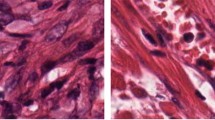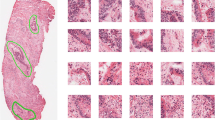Abstract
It is crucial to analyze colorectal cancer histological pictures with objectivity. One of the main causes of mortality globally is colorectal cancer (CRC), sometimes referred to as bowel cancer. Early diagnosis has become crucial for a treatment to be effective. A cutting-edge deep convolutional neural network (CNN) with transfer learning can classify several images of CRC into a variety of categories of artificial intelligence (AI). We have adjusted the Inception V4 model to classify the CRC histopathology images in this study's experiment. We also use transfer learning (TL) and modification techniques for increasing accuracy. Inception V4 net is currently one of the finest CNN designs for identifying CRC histopathology pictures from the National Center for Tumor Diseases (NCT) Biobank an open-source collection, according to the findings of our experiment. Additionally, we are able to achieve 97.7% accuracy using TL on the validation dataset, outperforming all prior values we could find in the literature.
Access this chapter
Tax calculation will be finalised at checkout
Purchases are for personal use only
Similar content being viewed by others
References
Bray F, Ferlay J, Soerjomataram I, Siegel RL, Torre LA, Jemal A (2018) Global cancer statistics 2018: GLOBOCAN estimates of incidence and mortality worldwide for 36 cancers in 185 countries. CA Cancer J Clin 68(6):394–424
Arnold M, Sierra MS, Laversanne M, Soerjomataram I, Jemal A, Bray F (2017) Global patterns and trends in colorectal cancer incidence and mortality. Gut 66(4):683–691
Kather JN, Krisam J, Charoentong P, Luedde T, Herpel E, Weis C-A, Gaiser T, Marx A, Valous NA, Ferber D et al (2019) Predicting survival from colorectal cancer histology slides using deep learning: A retrospective multicenter study. PLoS Med 16:e1002730
Komura D, Ishikawa S (2018) Machine learning methods for histopathological image analysis. Comput Struct Biotechnol J 16:34–42
Black-Schaffer WS, Morrow JS, Prystowsky MB, Steinberg JJ (2016) Training pathology residents to practice 21st century medicine: a proposal. Acad Pathol 3:2374289516665393
Campanella G, Hanna MG, Geneslaw L, Miraflor A. Werneck Krauss Silva V, Busam KJ, Brogi E, Reuter VE, Klimstra DS, Fuchs TJ (2019) Clinical-grade computational pathology using weakly supervised deep learning on whole slide images. Nat Med 25(8):1301–1309
Bulten W, Pinckaers H, van Boven H, Vink R, de Bel T, van Ginneken B, van der Laak J, Hulsbergen-van de Kaa C, Litjens G (2020) Automated deep-learning system for Gleason grading of prostate cancer using biopsies: a diagnostic study. Lancet Oncol 21(2):233–241
Strom P, Kartasalo K, Olsson H (2020) Artificial intelligence for diagnosis and grading of prostate cancer in biopsies: a population-based, diagnostic study. Lancet Oncol 21(2):E70
Szegedy C, Vanhoucke V, Ioffe S, Shlens J, Wojna Z (2016) Rethinking the Inception Architecture for Computer Vision. In: 2016 IEEE Conference on Computer Vision and Pattern Recognition (CVPR): 27–30 June 2016, pp 2818–2826
Kather JN, Krisam J, Charoentong P, Luedde T, Herpel E, Weis CA et al (2019) Predicting survival from colorectal cancer histology slides using deep learning: A retrospective multicenter study. PLoS Med 16(1):1–22
Padhy S, Dash S, Routray S, Ahmad S, Nazeer J, Alam A (2022) IoT-based hybrid ensemble machine learning model for efficient diabetes mellitus prediction. Comp Intell Neurosci
Peng T, Boxberg M, Weichert W, Navab N, Marr C (209) Multi-task learning of a deep K-nearest neighbour network for histopathological image classification and retrieval. In: Medical image computing and computer assisted intervention—MICCAI 2019. Springer International Publishing, Cham, pp 676–684
Tsai MJ, Tao YH (2019) Machine learning based common radiologist-level pneumonia detection on chest X-rays. In: Proceedings of the 2019 13th International Conference on Signal Processing and Communication Systems (ICSPCS), Gold Coast, Australia, pp 16–18
Xu J, Luo X, Wang G, Gilmore H, Madabhushi A (2016) A deep convolutional neural network for segmenting and classifying epithelial and stromal regions in histopathological images. Neurocomp 191:214–223
Du Y, Zhang R, Zargari A, Thai TC, Gunderson CC, Moxley KM, Liu H, Zheng B, Qiu Y (2018) Classification of tumor epithelium and stroma by exploiting image features learned by deep convolutional neural networks. Ann Biomed Eng 46:1988–1999. [CrossRef] Xu Y, Jia Z, Wang L-B, Ai Y, Zhang F, Lai M, Chang EI-C (2017) Large scale tissue histopathology image classification, segmentation, and visualization via deep convolutional activation features. BMC Bioinform 18:281 [CrossRef]
Dash S, Padhy S, Parija B, Rojashree T, Patro KAK (2022) A simple and fast medical image encryption system using chaos-based shifting techniques. Int J Info Sec Priv (IJISP) 16(1):1–24
Shankar TN, Padhy S, Dash S, Teja MB, Yashwant S (2022) Induction of secure data repository in blockchain over IPFS. In: 2022 6th International Conference on Trends in Electronics and Informatics (ICOEI), pp 738–743. IEEE
Pranitha G, Rukmini T, Shankar TN, Sah B, Kumar N, Padhy S (2022) Utilization of blockchain in e-voting system. In: 2022 2nd International Conference on Intelligent Technologies (CONIT), pp 1–5. IEEE
Padhy S, Shankar TN, Dash S (2022) A comparison among fast point multiplication algorithms in elliptic curve cryptosystem
Panda R, Dash S, Padhy S, Das RK (2023) Diabetes mellitus prediction through interactive machine learning approaches. In: Next generation of internet of things. Springer, Singapore, pp 143–152
Bejnordi BE, Mullooly M, Pfeiffer RM, Fan S, Vacek PM, Weaver DL, Herschorn S, Brinton LA, Van Ginneken B, Karssemeijer N et al (2018) Using deep convolutional neural networks to identify and classify tumor-associated stroma in diagnostic breast biopsies. Mod Pathol 31:1502–1512
Macenko et al (2009) A method for normalizing histology slides for quantitative analysis. In: 2009 IEEE International Symposium on Biomedical Imaging: From Nano to Macro, pp 1107–1110. Available from: https://doi.org/10.1109/ISBI.2009.5193250
Dash S, Das RK (2020) An implementation of neural network approach for recognition of handwritten Odia text. In: Lecture Notes in Networks and Systems, pp 94–99. https://doi.org/10.1007/978-981-15-2774-6_12
Dash S, Panda R, Padhy S (2021) Blockchain-based intelligent medical IoT healthcare system. SPAST Abst 1(1)
Author information
Authors and Affiliations
Corresponding author
Editor information
Editors and Affiliations
Rights and permissions
Copyright information
© 2023 The Author(s), under exclusive license to Springer Nature Singapore Pte Ltd.
About this paper
Cite this paper
Patnaik, R., Rath, P.S., Padhy, S., Dash, S. (2023). Histopathological Colorectal Cancer Image Classification by Using Inception V4 CNN Model. In: Sharma, S., Subudhi, B., Sahu, U.K. (eds) Intelligent Control, Robotics, and Industrial Automation. RCAAI 2022. Lecture Notes in Electrical Engineering, vol 1066. Springer, Singapore. https://doi.org/10.1007/978-981-99-4634-1_79
Download citation
DOI: https://doi.org/10.1007/978-981-99-4634-1_79
Published:
Publisher Name: Springer, Singapore
Print ISBN: 978-981-99-4633-4
Online ISBN: 978-981-99-4634-1
eBook Packages: Intelligent Technologies and RoboticsIntelligent Technologies and Robotics (R0)




